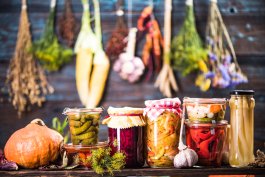
When you come up with a plan for your garden, do you usually have a cuisine in mind? I know that when I plant, I always want to have tomatoes and basil on hand for Caprese salads, pesto, and tomato sauce. Though in reality, because my garden is always so full of fresh juicy vegetables, they sometimes go to waste because I haven’t gotten to them in time. I’m sure you know what I mean, frustrating, right?
One school of thought is that instead of focusing on instant gratification, you might cater your garden to the types of foods that are better pickled or otherwise preserved. We’re not just talking pickles and dilly beans. I’m talking squash and apples, and other winter wonders that can feed a family all winter long.
Even simply adjusting your mindset that perhaps all those tomatoes shouldn’t be used for daily Caprese salads all summer long (albeit delicious) and might be better canned as sauce, salsa, or simply stewed tomatoes. As we wrap up another growing season, let’s talk about all the veggies that make excellent store-ables, so that you might be able to plan a more sustainable and longer-reaching crop for next year.

Carrots – (7-9 months) After digging up your carrots, don’t wash them, simply brush the dirt off, and allow them to layout for a day or two to dry. Then, store them upright in peat moss or sawdust in a box in a basement or root cellar that’s around 32°-38°F. Make sure they’re not laying on top of or touching one another. You can also simply keep your carrots in the ground until you’re ready but plan to harvest them before the ground freezes . Many people plant for spring carrots, however, spring carrots need to be consumed quickly, they can’t be stored. Carrots are also great for pickling!
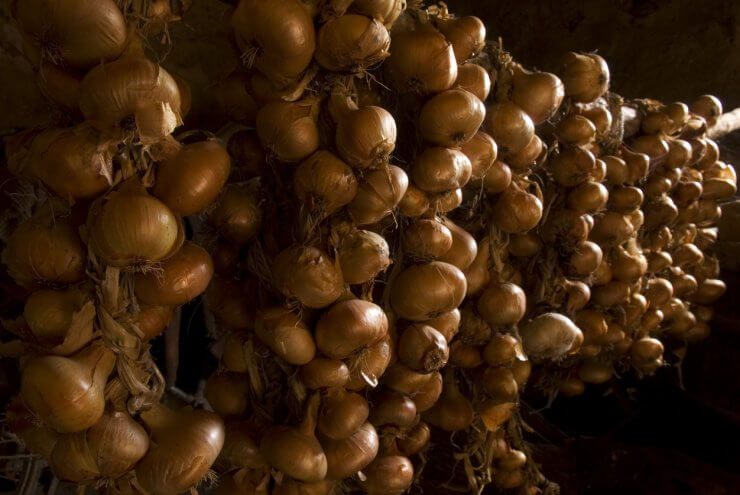
Onions and Garlic – (up to 12 months) Onions, like garlic, need to dry and cure before being stored. You can harvest onions all summer, but once the greens flop over and die, they’re done growing. Pull your onions and garlic up out of the ground and lay them out in a dry spot, or hang them over a railing with an ideal temp of about 75 degrees. Once the skins are withered and the necks are hard (about two weeks), they’re ready to store. Trim any greens down to 1″ and toss any that are bruised or damaged. Store in mesh bags or bushels (breathability is key). Or, let your greens dry out and try your hand at onion braiding. Big strong-scented onions that have been dried out for 2-4 weeks can last up to a year in a cool basement. Otherwise, eat within a few weeks. Onions are also delicious pickled!

Squash – (1-6 months) Storing squash in a cool, dry place is the easiest way to keep it. It doesn’t need cooking or special care; it can be stored where you would normally store potatoes and onions. Place the squash in a single layer with plenty of air space between each piece of fruit, ideally somewhere around 50-55 degrees Fahrenheit (10-13 degrees Celsius). One of the easiest ways to do this is to place them on a basement or cellar floor or shelf. It is best, however, to check first for moisture build-up and mildew on the floor; if there is either problem, wooden shelves will work better.
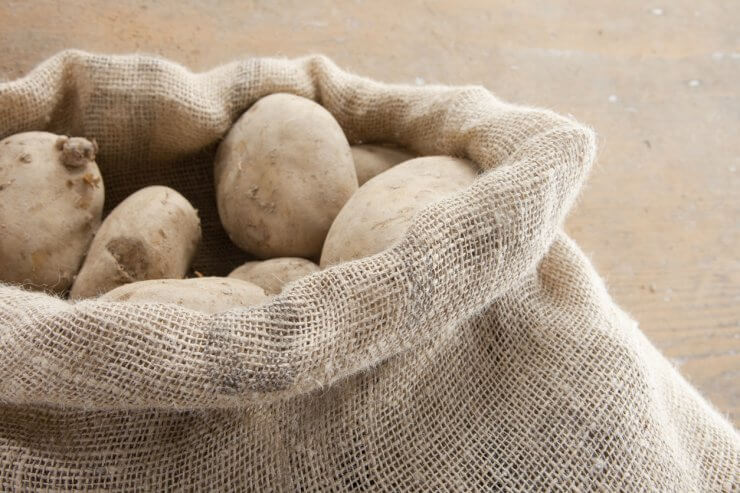
Potatoes – (5-10 months) The University of Idaho, which I’d gather knows a bit about spuds, says potatoes are best stored at temperatures of 42-55°F and 80-90% humidity. Now you probably understand why some people still have root cellars. If these conditions can not be met then it is best to keep potatoes in the refrigerator or on the countertop and eat them within a few weeks. Potatoes should be stored away from onions and apples as they release a gas that causes potatoes to rot more quickly. Any kind of plastic bag or container can be used for storage as long as it is breathable. Many people have had success with storing potatoes in a potato bag purchased from the store. Old pillowcases are not recommended as they do not breathe and can cause potatoes to rot, but you can also store them on a shelf in a cool basement on some hay.

Apples – (1-5 months) My favorite way to preserve apples is through apple sauce, apple jam, and apple preserves. But if you want to keep your apples whole, you can wrap each of your apples in craft paper or newspaper and store in a box in a cellar that is 35-40°F. Don’t pack any apples that are bruised, or they can rot the whole box. The paper should help them from spreading any rot, but look at the box often for signs of any rotting apples and promptly remove them. Apples are also delicious when dried!
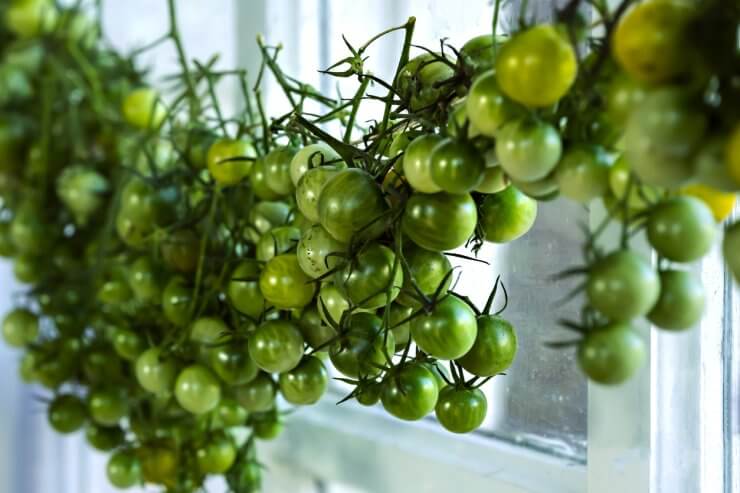
Green Tomatoes – (1-2 months) This one is more of a fun fact. Once the fall comes along and you know frost is on the way, you can cut all your green tomatoes off the vines and let them ripen indoors. You can lay them upside down on their heads near a window, or hang them! They can take up to two months to ripen indoors, but they almost always do, so you can get summer tomatoes deep into fall, even in colder climates! The sun isn’t necessary either, but warmth is. The warmer the room, the quicker the tomato will ripen, so if you want them to last longer, place them in a cooler area.
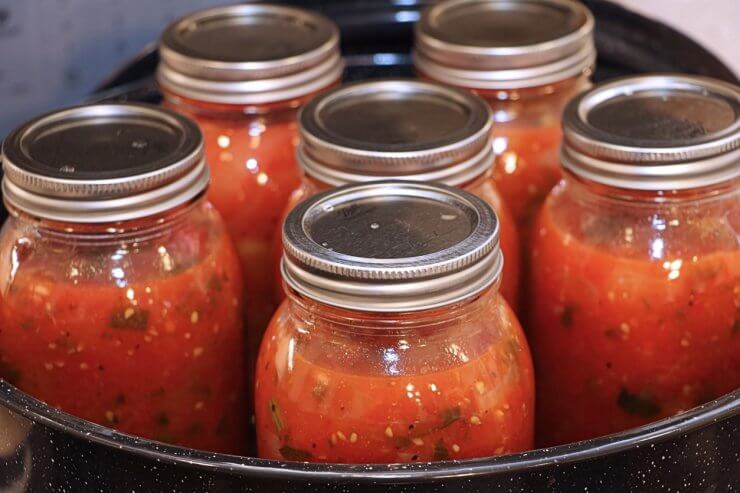
Ripe Tomatoes – (12 to 18 months) Canning tomatoes is a major joy in the life of most gardeners, there are jellies, sauces and salsas, stewed tomatoes, crushed tomatoes, and tomato soups! Whatever you do, follow the instructions exactly on your tomato canning recipes, as tomatoes need tried-and-true canning techniques to stay safe to eat over long periods. For all canned foods, store jars at 50° to 70°F and never above 95°F. For another idea, try hanging your tomatoes out to dry, or laying them out in the sun for sun-dried tomatoes!
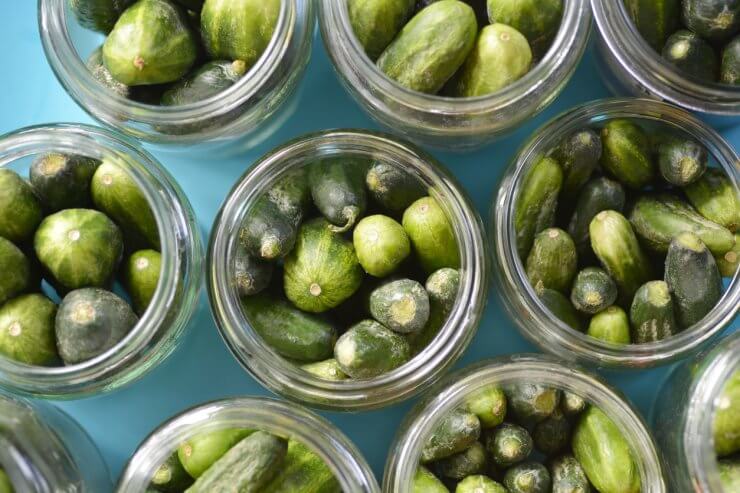
Cucumbers – (1-9 months) I can’t stress this enough: PICKLES! If you plan to pickle your cucumbers, plant varieties like the Boston Pickling Cucumber, the National Pickling Cucumber, the Bush Pickle, and any English or Persian cucumber variety with thin skin. For pickling purposes, you may also want to plant green beans to make dilly beans.
Another few good “cannables” and how to prepare them:
- Asparagus. Wash and trim your asparagus. Can it in pieces or in spears.
- Beets. Trim the tops, leaving some stem and roots. Boil to remove the skins. Can beets whole or cut in half or quarters for larger beets.
- Corn. Cut the kernels from the cob, making sure not to scrape the cob.
- Green beans. Another classic. You can leave them raw to can them. Clip off the ends and can them as they are, or cut them into one-inch pieces.
- Okra. Wash the pods, trim the ends, and leave whole or cut into one-inch pieces.
- Peppers. Blister or boil peppers so you can remove the skins. Leave small peppers whole and cut large ones in half.
What foods do you love to grow for the sake of storing, canning, and preserving?


 Previous
Previous


Freeze tomatoes: dry, put on cookie sheet or in plastic bag and freeze. When frozen put the tomatoes on the cookie sheet in a sealable plastic bag and return to the freezer. When ready to use run under hot tap water and skin will slip off easily. For your sauce or soup chop while still frozen.
I like that idea! Thanks!
Sounds great